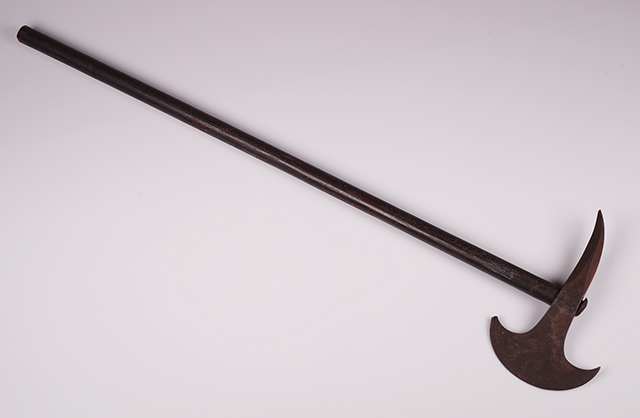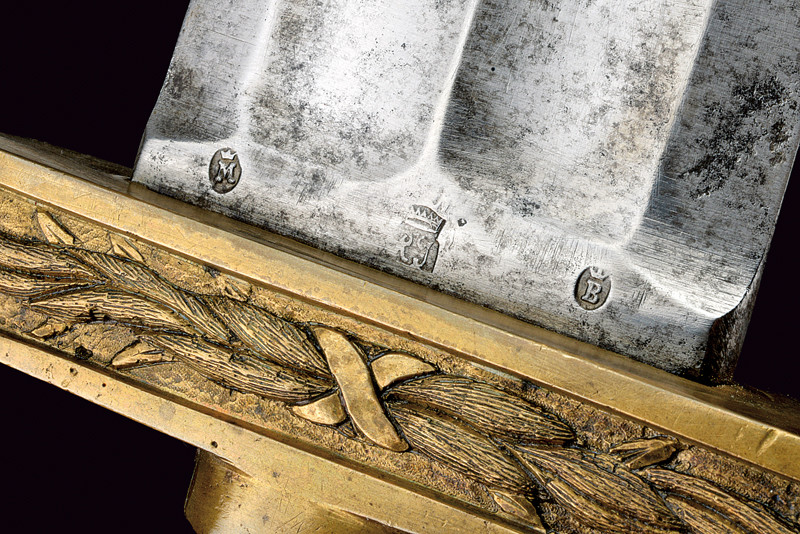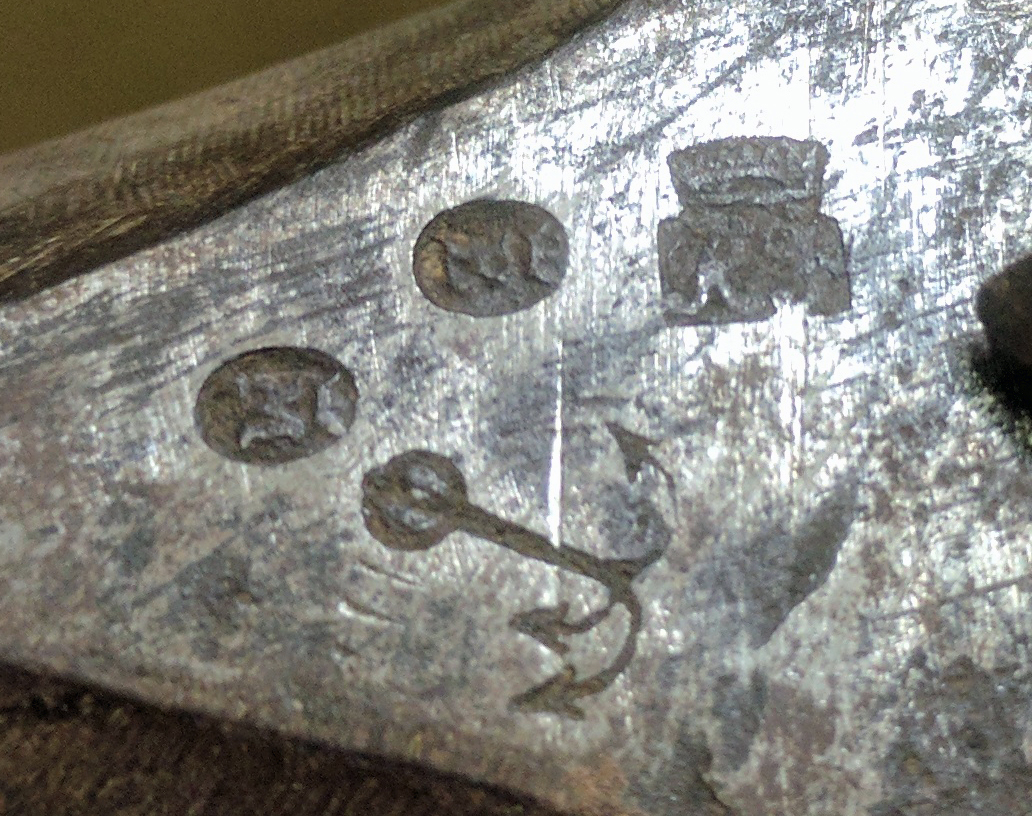No museum can ever employ a subject matter expert for every type of object in their collection—especially when their collection is as vast as ours. While we do have a staff member who can usually handle the identification of our weaponry, I recently asked him question that he couldn’t answer.

The question involved a boarding axe that had four very distinctive stamps on the blade (only one other boarding axe in the collection has a mark—a stamped anchor that immediately identifies it as a French Model 1833). The stamps are a crowned “M”, a crowned “B”, an anchor that looked like a grappling hook, and an indistinct crowned “something or other” (sorry about the technical term). At first we thought it was an eagle, then an elephant, and then a little cleaning showed it to be a couple of decorative letters; a script “R” followed by a letter that looked like an “S” or “F”.
So what do you do when you have an object with distinctive stamps that you can’t identify? Google it. This quick search lead me to the wonderful David Lee in Scotland and his site boardingaxe.com. I’m not lying…check it out if you’re a fan of historical weaponry–you’ll love it.
David agreed to look at the stamps and photographs of the axe to see if he could help us identify the piece. After looking at photographs he had his suspicions about its origin but he couldn’t readily identify it. David sent our images to several collectors and posted an inquiry on a few forums he’s involved with. Almost immediately another collector sent an image of the identical stamps (three of them at least) on a sword. When we compared the stamps with those on the boarding axe it helped us identify that rather indistinct mark as a crowned “RI” (the “I” was script which is why we initially thought it was an “S” or “F”). It turned out that this particular mark immediately identified both the time period and country of origin and it’s pretty darn cool.

The “RI” stamp is for Regno d’Italia/Royaume d’Italie (Italian/French) which indicates the boarding axe was made in the Kingdom of Italy sometime between 1805 and 1814. The two smaller crowned marks (the “M” and “B”) are inspector’s marks that are associated with the armourer Paolo Landi which was a private company manufacturing arms for the state.
If you’re a history nut this time period should ring a few bells. This was the period shortly after Napoleon proclaimed himself emperor of France (1804). The following year the Italian Republic became the Kingdom of Italy and Napoleon was proclaimed king. Napoleon’s subsequent victories added additional territories to the kingdom but it all came to an end on April 11, 1814 when the Treaty of Fontainebleau forced Napoleon to abdicate the thrones of both countries.
